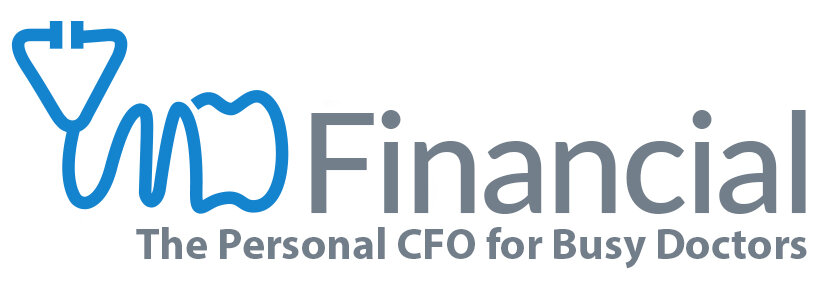Before ever meeting with MD Financial, nearly all of our doctors aged 55-70 believed they had enough money for retirement. The shocking thing is, only around 20% of those doctors actually had enough to retire.
Preparing for retirement takes time. The key is to start planning early in your career!
This week Katherine is interviewed by Brown University's Dr. Kristy McAteer. They have an info-packed discussion about what to expect leading up to, and transitioning into, retirement. To help our clients become retirement-ready doctors, we have compiled a list of important things to consider:
1. Inflation - Let’s say right now you need $150,000 per year to live your ideal lifestyle; 20-30 years from now you might need $300,000 per year to live that same lifestyle.
Have no fear; this is something we at MD Financial, factor into your retirement plan with the aim that there are fewer surprises down the road. Taking historical data into account, we factor in a 3.74% inflation rate into our plans, and create what-if calculations to ensure that our clients are prepared for what the future holds.
2. Lifelong Fulfillment - If you are not happy in your career now, your goal is likely to retire at an early age. To achieve this, you will need to work longer hours, take fewer vacations, and live on a tighter budget throughout your entire career. This may only compound the negativity that you might already be feeling.
We want you to be happy and fulfilled in your career now and content in retirement. This might require some self-reflection and/or discussion with a close financial advisor to decide if you need to make an adjustment of your specialty.
3. Budgeting - This is important to have established well before retirement. A budget allows us to project your cost of living into retirement and beyond. This may prompt some lifestyle changes now, so you can continue to live within your means later on.
4. Finality of Retirement - If a doctor needs to come out of retirement because they’ve run out of money, they do not have the same flexibility as many other professionals are afforded. Medical professionals trying to get back into the workforce may run into several hurdles including:
Certification/license expiration.
Apprehension of employers to hire an older applicant for physically and mentally demanding roles.
Lack of job market stability, in general.
5. “Partial” Retirement - Perhaps you want more time to spend with family, vacationing, or working on hobbies, but you still need a steady stream of income. Transitioning to part-time may be the best fitting option to reach your retirement financial goals. Also, if you have a side gig that was previously only supplementing your income, you could bring this into the foreground.
6. Life Expectancy - A grim subject, but a necessary one that will 100% factor into your retirement plan. When Social Security first was established, the life expectancy was around 62 years of age. Today, if you’re a non-smoking couple, there is a 30% chance that one of you will live to 100!
When building our client’s plans we default life expectancy to age 95; obviously there are family histories to factor into each plan that may lower or increase that expected age.
7. Frequent Review of Your Plan - Katherine’s mentor once said, “The further out you go, the softer the numbers get.” Priorities change, tax laws change, the market fluctuates, so having regular check-ins with your financial advisor will keep your retirement plan on track.
8. Tax Rates - We are currently at a historical low. Retirement planning includes predicting future tax rates and accounting for fluctuations; seeing just how long your money has the potential to last.
The best strategy to reduce your taxes now, is to maximize your work’s retirement plan offerings. You can utilize these in multiple ways:
401k, 403b, Solo 401k, and Traditional IRAs: you get a deduction now for your contributions. Money is taken out of your pre-tax pay and you only pay taxes when you withdraw funds.
Roth 401k, Roth 403b, and Solo Roth 401k: are funded with after-tax dollars by employees. Qualified withdrawals of employee contributions, and earnings, are tax-free in retirement.
Learn more about what account might best suit your needs here.
9. The Tax Control Triangle - If you’re a frequent reader/listener you know all about the tax triangle! We want your financial plan to be well-balanced, with investments in all three of the following categories:
Tax-now
Tax-deferred
Tax-free
A balance in these tax categories allows you to pivot where you pull money from based on the current economic climate. This can save you millions in retirement!
In summary, control what you can, and let the rest go; but of course, plan for the contingencies.
Listen on Apple Podcast, Google Podcast or Spotify
To hear the original podcast, check out the Brown University page here.
CONTACT US
1-888-256-6855
Remember that you can send us any questions or potential topics at: Info@MDFinancialAdvisors.com
Katherine Vessenes, JD, CFP®, is the founder and CEO of MD Financial Advisors who serve 500 doctors from Hawaii to Cape Cod. An award-winning Financial Advisor, Attorney, Certified Financial Planner®, author and speaker, she is devoted to bringing ethical advice to physicians and dentists. She can be reached at Katherine@mdfinancialadvisors.com.

![Retirement Basics for Doctors [Podcast]](https://images.squarespace-cdn.com/content/v1/561feb4ee4b0de0eb30d6d3c/1623357834481-QFSBIT7TB9VUVMGLA69X/etienne-desclides-GYNxcQvBNzA-unsplash.jpg)
